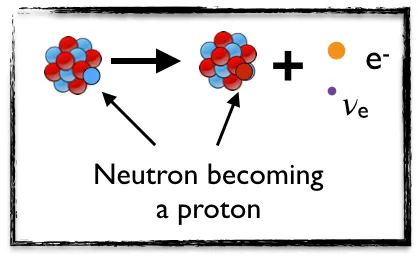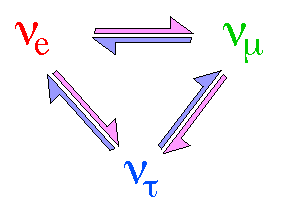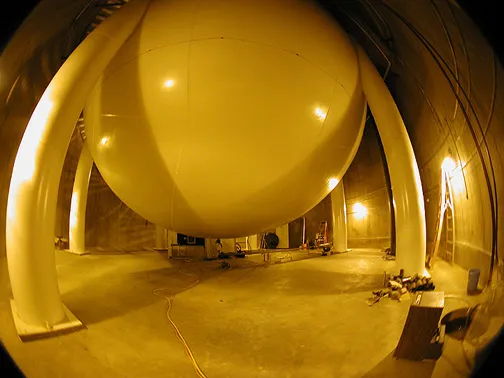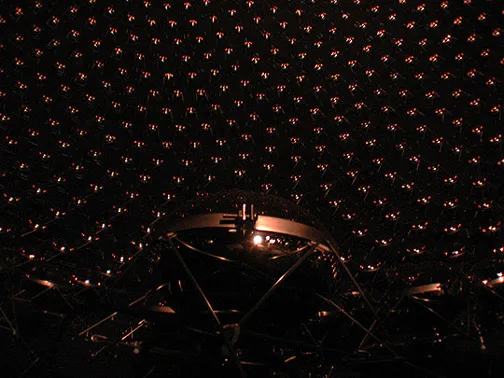Neutrinos are intriguing beasts. By their sole nature, they indeed require the existence of some physics beyond the Standard Model of particle physics. Very recently, things become even more messy thanks to fresh results reported by the MiniBooNe experiment at Fermilab.

[image credits: Fred Ullrich (public domain)]
The MiniBooNe experiment is one of the numerous experiments currently harvesting information about the three neutrinos of the Standard Model,. thanks to a very oily detector.
The neutrinos are indeed known to be massive (see here), which has a lot of implications.
In particular this implies that neutrinos oscillate into each other when they propagate.
In other words, even if one prepares a beam of neutrinos of a given flavor (there are three of them to be precise), one could observe neutrinos of another flavor in a detector. New flavors can appear, and the original flavor can disappear.
This is the key principle behind most neutrino experiments: studying these disappearance and appearance of neutrino flavors.
Once again, an irrelevant thing is hidden in this post.
NEUTRINOS AND THEIR OSCILLATIONS

[image credits: homemade]
Neutrinos were introduced more than a century ago, when the first radioactivity studies were undertaken.
Data was pointing to the existing of an invisible particle produced through the beta decay of a given atomic nucleus into another nucleus and an electron (see the picture, the electron is the orange blob and the neutrino is the small pink one).
In 100 years, this phenomenon was theorized and is today known to be described by the theory of the weak interactions, that is itself fully included in the Standard Model of particle physics.
Today, we know that there are three neutrinos in the Standard Model, namely the electron, the muon and the tau neutrino. The symmetries underlying the Standard Model, taken together with the experimental constraints on the form of the neutrino interactions, moreover impose that neutrinos are massless.

[image credits: Fermilab]
But the story does not end there.
The last two decades of experiments have demonstrated that neutrinos are messier that expected, and that the Standard Model should be extended to describe neutrino data.
Understanding neutrino physics represents thus a challenge for getting hints of how matter works at the most fundamental level.
Neutrinos are indeed massive, which implies they oscillate. A neutrino of a given type can turn into a neutrino of another type when it propagates. We can hence produce an electron neutrino in one place of Earth, and detect it as a muon or a tau neutrino a few hundreds of kilometers away.
THE MINIBOONE EXPERIMENT

[image credits: Fermilab]
MiniBooNe consists in one of the experiments studying neutrino oscillations. The idea behind this experiment is pretty simple.
One first prepares a beam of quite energetic muon neutrinos from a bunch of hydrogen ions. This is achieved in several steps.
One begins with stripping the ions from their electrons so that one ends up with a beam of protons.
The protons are then smashed against a beryllium target, which generates a plethora of secondary particles including muon neutrinos originating from the decays of particles called pions.
The pions are arranged into a well-collimated beam thanks to a strong magnet, so that one ends with a beam of muon neutrinos aligned in the same direction, after getting rid of any other particle thanks to an absorber that absorbs everything but neutrinos.
The neutrino beam next reaches an oil detector of 800 tons lying 500 meters away from the source. A tiny (tiny tiny) fraction of all neutrinos will interact with the detector, and the observation of these interactions allows physicists to tag the nature of any neutrino that leaves a track in the detector.
The key point behind that is that the track of an electron-neutrino consists in an electron, the track of a muon neutrino consists in a muon and the track of a tau neutrino consists in a tau lepton.
The production of these three charged particles (the electron, muon and tau) yields different classes of shockwaves in the oil of the detector, and these shockwaves can be studied through a bunch of phototubes.
This hence allows physicists to get back to the flavor of the initial neutrino that generated a given shockwave.
DISCUSSION - THE MINIBOONE RESULTS AND THEIR CONSEQUENCES
The MiniBooNe detector can hence measure the rate at which muon neutrinos oscillate into electronic neutrinos. But why is it interesting? The reason lies in existing data.
Back in 1995, the LSND experiment reported evidence for muon to electron antineutrino conversion. These pieces of data were however incompatible with other neutrino experiment to a large extent.

[image credits: Fermilab]
Therefore, these old measurements had to be confirmed. This is where MiniBooNe, and BooNe in the future, comes into the game.
If the LSND results are confirmed, our understanding of the laws of nature will be changed, as this would mean that there is probably a fourth species of neutrino.
Also, it may be very well that the issue is connected to the neutrino/antineutrino difference. The MiniBooNe experiment has therefore be designed to be able to distinguish neutrinos from antineutrinos.
This being said, the first results of the MiniBooNe experiments have been reported, and the anomaly has been confirmed.
Whilst this is definitely exciting, data is still consistent with standard neutrino oscillations. In other words, even if other neutrino models could provide a better fit to data, the standard one is not excluded yet.
To conclude, a neutrino mystery dating from almost 25 years is still very mysterious. New phenomena could be really there, and we may face the existence of a fourth neutrino species. However, data is not telling us whether this is the case yet, and I am afraid that the final words are ‘please stay tuned’.
STEEMSTEM
SteemSTEM is a community-driven project that now runs on Steem for almost 2 years. We seek to build a community of science lovers and to make Steem a better place for Science Technology Engineering and Mathematics (STEM). In particular, we are now actively working in developing a science communication platform on Steem.
More information can be found on the @steemstem blog, in our discord server and in our last project report.